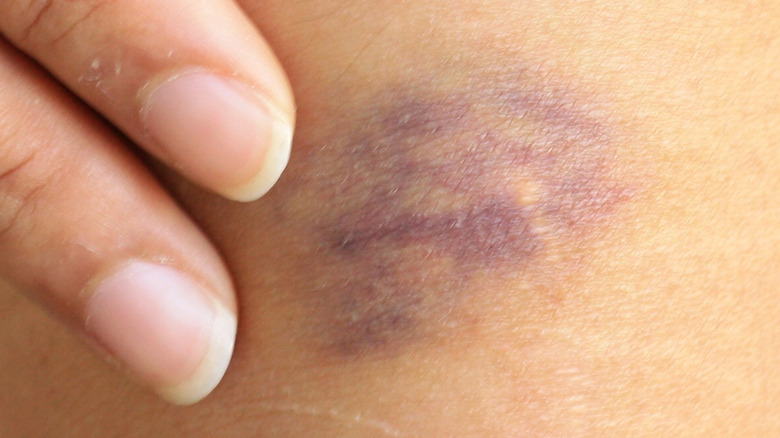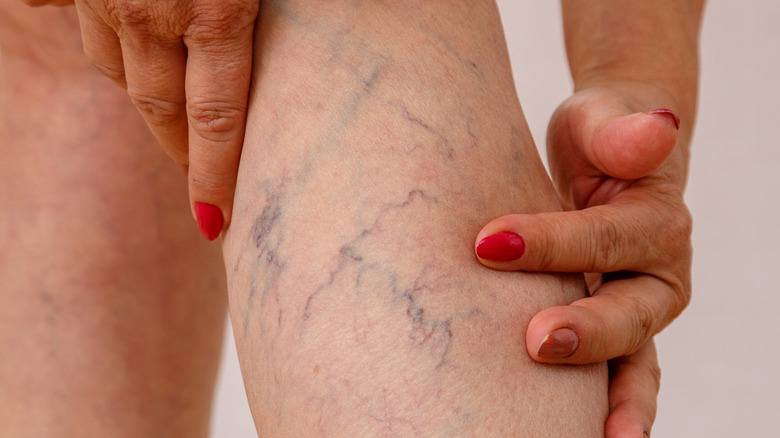What Color Is Blood When It's In Your Body?
You might not think much about the blood in your body until a scrape or cut has you reaching for a bandage, but blood is essential. According to the American Red Cross, average adults have anywhere from 1.2 to 1.5 gallons of blood coursing through their blood vessels. Medical News Today notes that the weight of all of that blood constitutes up to 8% of your total body weight. Blood flows continuously, with the heart pumping the equivalent of a whopping 1,800 gallons of blood through your body each day (via Everyday Health).
You have no doubt noticed that some of the blood vessels visible through your skin appear to be blue or a deep shade of purple. You might have even heard that the blood in your vessels is blue due to a lack of oxygen, but this is not true. That being said, if the blood in your body is red, why does it look blue?
It's an optical illusion
Blood may look blue when you see it in a vein through your skin, but that is a trick of the eye. The illusion has to do with how our eyes absorb color, according to Medical News Today. Blood contains hemoglobin, which has iron, giving it its red color. That being said, blood that travels from the heart is a vibrant shade of red, while blood flowing toward the heart is a crimson color. This darker shade tends to look purple or blue due to how light passes through the skin.
While humans do not have blue blood, there are some animals that do. Some crustaceans, mollusks, centipedes, and spiders have blue blood because their blood contains the protein hemocyanin. However, blue and red are not the only colors of blood in living things on Earth. Leeches and some worms have green blood, while beetles and sea cucumbers have yellow blood. If that's not enough, several types of worms have purple blood (via Business Insider).


